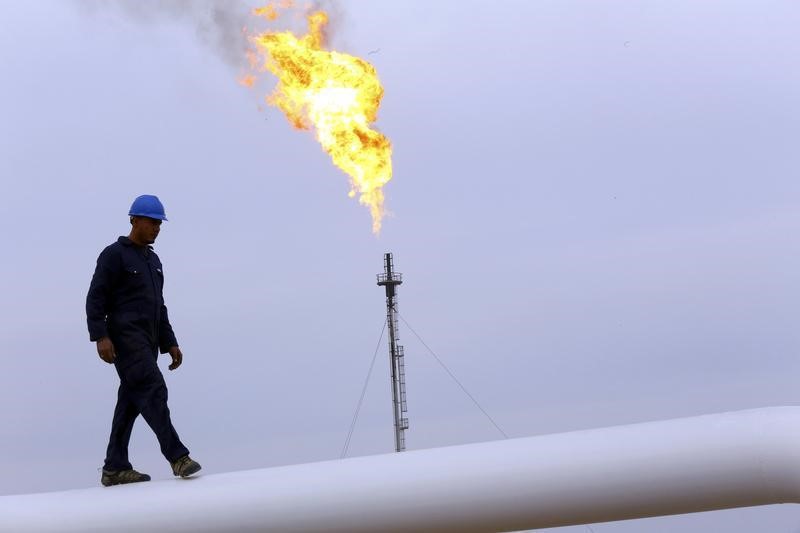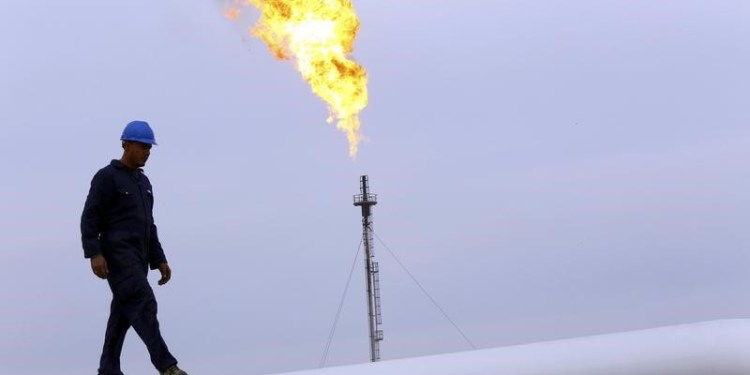
© Reuters.
LCO
-1.94%
Add to/Remove from Watchlist
Add to Watchlist
Add Position
Position added successfully to:
Please name your holdings portfolio
Type:
BUY
SELL
Date:
Amount:
Price
Point Value:
Leverage:
1:1
1:10
1:25
1:50
1:100
1:200
1:400
1:500
1:1000
Commission:
Create New Watchlist
Create
Create a new holdings portfolio
Add
Create
+ Add another position
Close
CL
-1.83%
Add to/Remove from Watchlist
Add to Watchlist
Add Position
Position added successfully to:
Please name your holdings portfolio
Type:
BUY
SELL
Date:
Amount:
Price
Point Value:
Leverage:
1:1
1:10
1:25
1:50
1:100
1:200
1:400
1:500
1:1000
Commission:
Create New Watchlist
Create
Create a new holdings portfolio
Add
Create
+ Add another position
Close
By Barani Krishnan
Investing.com — Oil bulls wallowed in another day of losses on Friday after a surprisingly higher U.S. inflation print for August reinforced expectations for more super-sized Federal Reserve rate hikes.
U.S. crude’s strong run-up between Tuesday and Wednesday, however, held the market in good stead for a small weekly gain in five, despite major losses for September and the third quarter — the first quarterly loss for oil in two years.
Oil bulls were also charged up ahead of next week’s meeting of the OPEC+ alliance of 23 oil producers and exporters. The 13-member Saudi-led Organization of the Petroleum Exporting Countries and its 10 Russia-steered allies are to meet on Oct. 5 to finalize output quotas for November.
New York-traded West Texas Intermediate for November delivery settled at $79.49 per barrel, down $1.74, or 2.1%, on the day. For the week, WTI was up almost 1%. For the month, however, the U.S. crude benchmark was down 12.5%. For the third quarter, it was down 24%.
Brent, the London-traded global benchmark for oil, for delivery in December was at $85.14 per barrel by 14:45 ET (18:45 GMT), down $2.04, or 2.3%. Unlike WTI, Brent was also lower on the week, losing 1.2% for a fifth straight weekly decline. For the month, Brent was down 11% and for the quarter, it lost some 26%.
Friday’s pressure on oil and other risk assets came after data showed the Fed’s preferred inflation indicator, the Personal Consumption Expenditures Index, grew 6.2% during the year to August, versus 6.3% in the 12 months to July.
Economists polled by US media had expected the so-called PCE Index to expand by just 6% during the year to August.
On a monthly basis, the PCE Index actually grew more in August than in July, rising 0.3% from a previous decline of 0.1%. Economists had expected a monthly growth of just 0.2% in August.
The readings showed the Fed’s battle against inflation had barely eased despite sharp drops in gasoline prices over the past three months. The Fed has warned of late that it will not let up on rate hikes it had embarked on since March to fight inflation.
U.S. inflation remains “very high” and could continue to shock as the Federal Reserve works on subduing the worst price pressures in four decades for Americans, Fed Vice Chair Lael Brainard said Friday. “Monetary policy will need to be restrictive for some time to have confidence that inflation is moving back to target,” she added.
To fight inflation, the Fed has raised interest rates by 300 points this year, from an original base of just 25 points in February. The central bank’s chairman Jerome Powell said last week that U.S. rate hikes will have some way to go before the Fed considers a pause or reduction, with the likelihood of another 125 basis points being added before the end of the year.
“The Fed pivot is coming before the end of the year because severe economic weakness is around the corner as aggressive tightening will remain in place,” said Ed Moya, analyst at online trading platform OANDA.
“The crude demand outlook is not getting any favors from economic data or corporate reports. OPEC+ will have an easy job next week, but oil prices won’t catch a bid until energy traders are confident an aggressive reduction of output at around 1 million bpd will be delivered. Brent crude is poised to consolidate below the $90 level.”
Russia is pushing OPEC+ to cut output by a substantial 1.0 million barrels per day or around that, those familiar with the Kremlin’s thinking have said. But Moscow is unlikely to contribute much to any production cut by the alliance due to the ongoing impact on its energy exports from Western sanctions imposed over its invasion of Ukraine.
The Russians have also been undercutting others in OPEC+ by selling their crude at heavily discounted rates to buyers like China and India. A production cut by OPEC+ that Moscow does not fully participate in will benefit Russia more than the rest of the alliance as it might continue to steal customers from the others.
Also, OPEC+ has not met its monthly production targets for months, so any quotas announced by the group might be virtually meaningless. Case in point: A Reuters survey published Friday found OPEC+ raised its September crude oil production to the highest level since 2020 — yet failed to meet its September quota. Thus, on the way down too, the alliance might fall short of its target.
Source: Investing.com


























